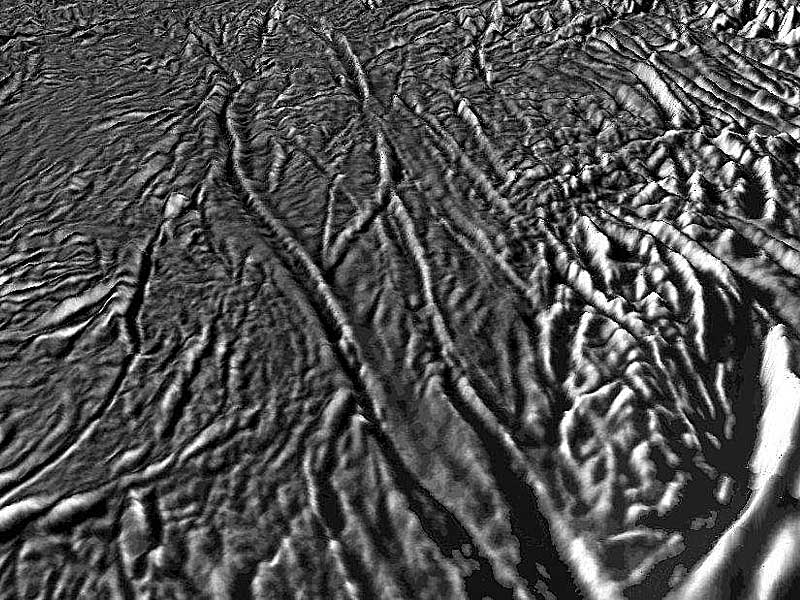Explanation: Could life exist beneath Enceladus? A recent flyby of Saturn's icy moon has bolstered this fascinating idea. Two years ago, images from the robotic Cassini spacecraft orbiting Saturn led astronomers to the undeniable conclusion that Saturn's moon Enceladus was spewing fountains of gas and ice crystals through cracks in its surface dubbed tiger stripes. Last month, Cassini dove through some of these plumes and determined that they contained water vapor laced with small amounts of methane as well as simple and complex organic molecules. Surprisingly, the plumes of Enceladus appear similar in make-up to many comets. What's more, the temperature and density of the plumes indicate they might have originated from a warmer source -- possibly a liquid source -- beneath the surface. A liquid water sea containing organic molecules is a good place to look for life. Pictured above is a vertically exaggerated close-up of some long, venting tiger stripes. The computer composite was generated from images and shadows taken during the recent Cassini flyby. Nine more flybys of Enceladus by Cassini are planned.
1999 2000 2001 2002 2003 2004 2005 2006 2007 2008 2009 2010 2011 2012 2013 2014 2015 2016 2017 2018 2019 2020 2021 2022 2023 2024 2025 |
Январь Февраль Март Апрель Май Июнь Июль Август Сентябрь Октябрь Ноябрь Декабрь |
NASA Web Site Statements, Warnings, and Disclaimers
NASA Official: Jay Norris. Specific rights apply.
A service of: LHEA at NASA / GSFC
& Michigan Tech. U.
|
Публикации с ключевыми словами:
Enceladus - Энцелад
Публикации со словами: Enceladus - Энцелад | |
См. также:
Все публикации на ту же тему >> | |
